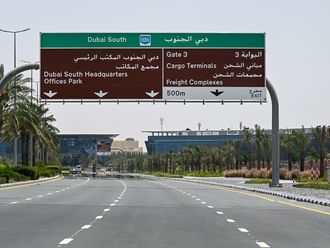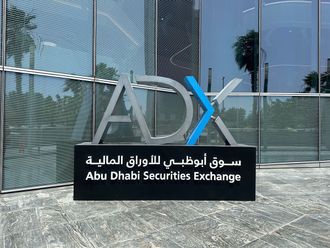Globalisation poses fresh challenges for corporate treasurers.
While the globe may be divided into different continents and countries, the reality is that we are today living in what could be construed a 'borderless world'.
Consider this - a US company finds it exorbitant to manufacture a particular good at their platform in Texas and outsources it to China; a large global organisation sets up a back-office processing unit in India; a company accesses the capital markets in Japan to take advantage of borrowing cheaply in yen; a student in the US gets tutored over the net by a teacher sitting in Singapore.
As the world has evolved, so has the job of risk management. Today a corporate treasurer's job is not simply ensuring the company has enough money to meet its obligations.
The role is far more complex, and involves managing both asset and liabilities with the overall objective of minimising the volatility in earnings and maximising shareholder returns.
Effective management
In other words, it means effective management of market risk, credit risk and liquidity risk. Focusing primarily on market risk, the challenge is to respond to exposure to interest rates, currencies, equity and commodities. Effective risk management involves the identification of those risks on the balance sheet, their characteristics and the magnitude of their potential impact on the bottom line.
Once risks have been identified, they need to be managed as and when necessary, a process which must have the support and 'buy-in' from senior management. At this stage, it is imperative to understand and appreciate there exists a trade-off between risk reduction and return enhancement.
Let's look briefly at some of the risks a company could be running on its balance sheet.
It could be using working capital to fund some long-term investments. In such a scenario it is running both interest rate risk and liquidity risk.
Often companies have income and expenses in currencies different from the underlying currency of their balance sheet. In such situations, currency fluctuations can dramatically impact the returns from an asset as well as increase the cost of a liability. Fluctuations in the prices of raw material costs such as oil, aluminum, etc. could also impact returns.
A company with operations in other countries could be exposed to translation risk if the currency differs from its own accounting currency. There are also economic risks that the company could be exposed to. Thus, a company with no yen exposure could be exposed indirectly to fluctuations in yen because its biggest competitor in the market imports in that currency.
Not only is the treasurer's job made tough by the number of balls he or she has to juggle, but often corporate decision-making involves taking relatively long-term views in a market where underlying views on currencies and interest rates are anything but long-term.
On more than one occasion we have seen 'sensible' economic theory break down, causing an unexpected market reaction. Fortunately, there is a silver lining - namely the fact that the growing complexity of risk management has been accompanied by a growing suite of products to manage risk.
Financial excellence
As the UAE has grown as a centre for financial excellence, so has the banking industry, and subsequently the array of product offerings. Today, when it comes to risk management, a corporate can access products here that are by and large identical to those available to their counterparts sitting in Japan, London or New York.
Hence, corporate treasurers have at their disposal a plethora of products to choose from, with which to manage various market risks on their balance sheet.
Exotic option structures are available to manage the risk arising from liabilities in foreign currencies. Interest rate derivatives can help to achieve and manage an ideal floating-fixed asset-liability mix, with principal-protected structures used to enhance yield on assets.
As local corporations grow in size, either organically or inorganically, so does their requirement for risk management. This growth has been concomitant to that of providers of risk solutions, with a host of banks looking to either grow their existing operations or set up new operations. It has resulted in an ever-increasing array of new products.
However, there is a difference in this part of the world, whereby corporates are not as fully-served as elsewhere, and this is due to the absence of a liquid local currency derivative market. Given that local currency and interest rates in the UAE are pegged to the US dollar, the need for the development of such a market has been obviated. However, if and when the UAE moves away from the peg, volatility in Dirham exchange and interest rates would create a need for products allowing corporates to manage both short-term and long-term risks efficiently.
As with any risk management policy, it is important to recognise that decisions made today may either bear obvious fruit or even appear irrelevant going forward. It must be appreciated and understood that the objective of risk management is to reduce volatility in projected earnings, rather than trade the market risks.
To what extent risk needs to be managed is a question for all corporate treasurers to ask themselves, because there is no single correct answer. It all depends on the nature of the risk in hand, the impact on the bottomline and the risk appetite of the company.
In the end, it's wise to remember that the 'perfect hedge' exists only in a Japanese garden.
- The author is Regional Head of Sales, HSBC Global Markets, Middle East. The views expressed herein are his own and not necessarily those of his employer.












